
12 minute read
Op BROADSHARE
Lt Col Lucy Butler reflects on a ten-month deployment as an OF3 (Major) to a British Overseas Territory spanning Operation BROADSHARE and secondment to the Foreign Commonwealth and Development Office.
In April 2020, as part of the Standing Joint Force Headquarters (SJFHQ), I deployed on Op BROADSHARE, the UK Government’s immediate response to support British Overseas Territories at the start of the COVID-19 pandemic crisis. In August 2020, I redeployed on Foreign, Commonwealth & Development Office (FCDO) secondment to the to the Turks and Caicos Islands (TCI) as the National Security Advisor. I worked directly to Her Majesty’s Governor and she was given one clear objective; enhance the territory’s national security.
Utilising experience gained from operational deployments to Iraq and Afghanistan, and various planning roles, I set about understanding three issues contained with the TCI National Security Strategy: Serious Violent Crime, Disaster Management and Cyber Security. Concurrently, I undertook two specific tasks linked to forensic capability, namely on-island analysis capacity and the status of the Coronial System.
I knew I needed to conduct an estimate to really breakdown the lines of effort I’d been asked to progress. The first step was to consolidate understanding brought forward from Op BROADSHARE and quickly develop knowledge of the issues I was initially unfamiliar with.
With autonomy and access to stakeholders and influencers, I was able to quickly establish a baseline understanding of these key security issues, routinely briefing the territory’s National Security Council, Criminal Justice Stakeholders Group and FCDO desk officers. With the help of the Scottish Violent Crime Reduction Unit, I was able to co-ordinate a ‘Building Safer Communities’ workshop, attended by the Hon Premier and 30 national figures, by the end of October – this directly led to a strategy paper, containing long-term objectives and immediate actions, endorsed by interlocuters, address escalating serious violent crime within the islands. In the months that followed, the contract with US based forensic analysis providers was revised, the first Coroner’s Inquest in seven years was convened and the Home Office undertook a national cyber security assessment of Government departments and critical national infrastructure.
December heralded the start of one last ‘task’. Just before Christmas, a COVID-19 Vaccination Task Force was established. I was appointed as its Director of Logistics. Preparing for the safe receipt, storage and onward distribution of a precious and challenging commodity became the ‘Main Effort’. The first batch of Pfizer vaccine arrived in the TCI on 7 January 2021 and exceeding all expectations, just over 5,800 people received their second dose by the end of February, coinciding with the arrival of batch two.
The opportunity to work with the FCDO and Public Health England to alleviate crisis in an amazing place was a once in a lifetime opportunity that I’m hugely grateful for. I’m super proud to have a played a small part in supporting the TCI and will hold dear the memories and friendships I’ve brought back home. 8 FCDO TCI website: https://www.gov.uk/world/ turks-and-caicos-islands/news
#BritishArmyLogistics
Caribbean Adventure
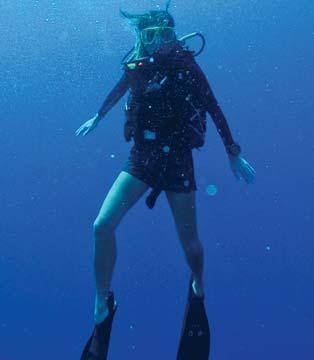
8 The secondment did allow time for
some adventure sport
8 Supporting TCI was a once in a
lifetime opportunity
If you have not been to the Sea Mounting Centre (SMC) at Marchwood in the last two years, you will probably not recognise the port. Nearly all of the grass is gone, with 40ft ISO containers stacked five high and civilian contractors everywhere you look. That, however, does not mean Tri-Service shipping has stopped. On the contrary, the Port Movement Control Centre (PMCC) is as busy as ever with the extra challenge of not having much spare space.
The team of fourteen Movement Controllers manage and co-ordinate all Defence Shipping both in and out of the SMC. Due to COVID-19, when most of Defence was trying to work from home, the PMCC still had over 40 vessel visits to load and offload during 2020.
The Export Section is run by a team consisting of a Cpl, LCpl and Pte. They issue ‘Call Forward Instructions’ (fifteen working days before sailing) and co-ordinate the reception of all vehicles and freight into the port (seven days before the ship arrives), whilst also ensuring biosecurity is adhered to and the correct paperwork is submitted for export. They then stow the vehicles in the correct area and start completing the Cargo & Stowage Reports.
With the same size team in Container Section, they look after the hundreds of containers getting exported all over the word and have the extra job of weighing all the containers and checking for Dangerous Goods. They also build their part of the Cargo & Stowage Report concurrently, making sure containers don’t get mixed up when exporting to different locations or with containers leaving the port for internal UK destinations.
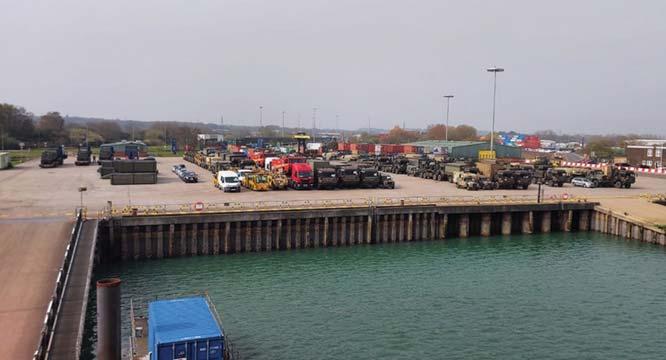
The Movers at Marchwood
By WO2 (MCWO) Susanna Page
The third section is Import Section. Arguably the section under the most pressure, they are responsible for clearing the port (within seven days of unloading) of both containers, vehicles and freight. This work is vital to avoid incurring the demurrage charge of £45 per day, per item, that is billed to the MOD by the civilian port authority.
The PMCC also has two Sgt posts that rotate between the Government Authorised Explosives Representative (GAER) role and the Troop Admin Sgt role. The GAER has the huge responsibility of the safe loading and onward movement of all ammunition transiting through the SMC. The ‘SNCO Shipping’ is a SSgt, providing top cover for the three Section Commanders and acts as the single point of contact for all shipping RFIs (Requests for Information) from across Defence and around the world. The MCWO covers all Troop Commander duties, looking after the Military Secretariat for the department and interacting with her counterparts to allow the teams to operate and concentrate on their primary role. 2020 into 2021 really tested the PMCC, particularly over the last three months. Apart from being a small team already (in 2017 there were 22 movers), the team have had to gap some roles due to post tour leave, early assignments and they had their own COVID-19 crisis in Jan 21 when both Container and Export Section had to isolate during a very busy shipping period. Mar 21 saw the team load and discharge six ships within seven days, forcing the team to operate a 24/7 shift system.
Maintaining morale and managing expectations when it comes to the ‘Regimental offer ‘like AT, courses and Brigade learning opportunities has been a challenge; however, the PMCC is fortunately staffed with exceptional tradespeople who each have a breadth of experience that allows them to meet the challenges head-on. The PMCC team have a very productive, positive and professional team who always manage to ‘pull it out of the bag’ under some very difficult conditions. They are very proud of their output in support of UK Defence activities in the face of the testing conditions that the last 12 months have presented.
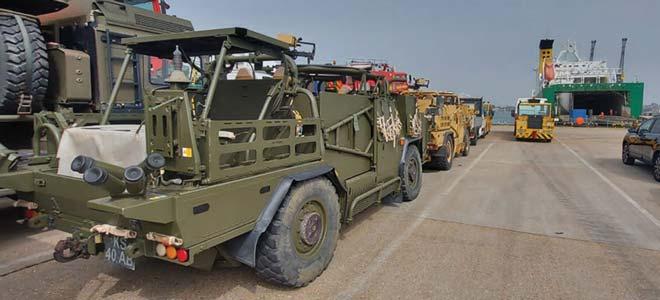
8 Vehicles segregated by location and
ready to load
8 Exercise DEFENDER and Operation
BILOXI waiting to load
The Defence School of Transport
The introduction of the new Minimum Test Vehicle
The Defence School of Transport (DST) changed a significant part of its training fleet last year. The Minimum Test Vehicle (MTV) is a purpose-built training vehicle, designed to meet UK/EU transport operating requirements, whilst maximising driver, instructor and training efficiency. The vehicle is used to deliver Cat C and C+E licence acquisition before students move on to conversion and familiarisation training on military platforms. The MTV design cuts training time through utilising secured loads is cheaper to buy/operate and more environmentally friendly to use than the equivalent operational military vehicle. It is designed to provide a positive and safe training environment for the student and instructor over sustained periods of operation. The latest variant enables a smoother transition of students from civilian C+E vehicle operation to military vehicle equivalents due to its similarity in size, automatic gearing and trailer arrangements. Since its introduction, the licence acquisition pass rate at DST has significantly increased alongside an overall 1.5 days (approx.) reduction in overall training time.
The MTVs are provided under contract with a total of 54 MTV and 40 trailers located at DST to deliver the training. DST also supports the fleet of 14 MTV and trailers held under Regional Command to provide licence acquisition in conjunction with Contract Driver Training (CDT).
With an annual vehicle mileage in TY 20/21 of circa 286,372km, the newest MTVs are enabling Defence to deliver quality training at a reduced carbon footprint than either of their predecessors or existing green fleet counterparts. Whilst they cannot replicate the capability of military vehicles in their primary operational role, they provide a safer, and more efficient route to qualifying an individual at the level where they can then move forward incrementally to operating the military fleet as part of their skill development.
Simulation in driver training
Whilst a significant part of military training is delivered using simulation within the British Army, investment in the simulation of logistic vehicle operation falls short of other platforms. In comparison, the US military has for some time used simulation as an integral part of learning to drive, operate and maintain all classes of vehicles. Research indicates that analysis and training of key driver skills through the use of simulator platforms could deliver savings of up to 9% in fuel consumption annually, as well as reducing maintenance costs and in-life support requirements.
DST initiated a driving simulation trial in Jan 21. This work sits alongside the development of the existing VBS3 augmented training at DST to encompass planning and mission rehearsal requirements. The early results of the trial are encouraging. There are numerous types of specialist applications available that can be used to assist new drivers learning to cope with the demands of modern-day motoring. Simulation will not solve everything –but it will augment the time spent on public roads and training areas so that this time delivers the best effect. As a result, students will be better equipped to deal with real life situations having experienced simulated versions, including driving on sand, snow and differing terrain.
As the use of driver simulation develops further, there is considerable potential to increase its use across logistic units – this could enable safer training at a lower cost and reduced environmental impact (two areas which are increasingly relevant for the Army).
Human factors - driver fatigue
Driver fatigue is a critical factor in non-operational deaths and injuries. DST instructors see trainee performance dipping significantly when tired and this is an area which is closely monitored. However, when Service personnel get out to their units, they encounter a military culture underpinned by engrained mottos of crack on, dig in and give 110%.
The will to win is essential in establishing an edge over an enemy on the battlefield – and its
Commandant: Colonel Chris Henson QGM COS: Lt Col Ben Aumônier RLC
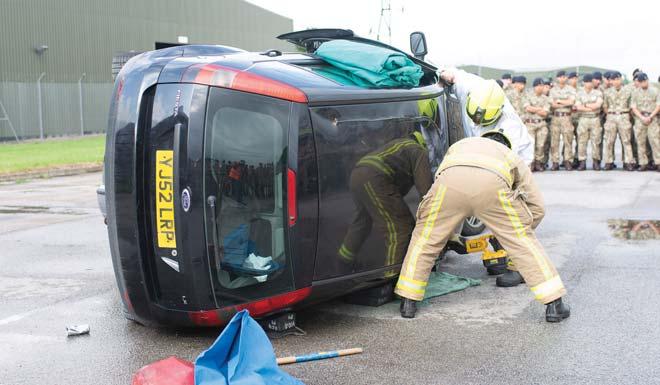
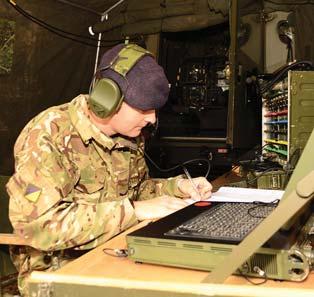
8 DST's CIS Trg Sqn id developing the next
generation of logistic communicators
8 DST Road Safety Demo
vital that it is developed in peace and pre-training - but we must manage risks where possible. Driving when tired is comparable with drink driving and often results in serious injury or death. In 2020, statistics saw a large decrease due to COVID-19 restrictions, but in 2019 there were 25,945 people seriously injured and 1,752 deaths on UK roads. Fatigue related traffic accidents in white fleet are 50% more likely to result in death as they tend to be high speed impacts and this figure is comparable with military vehicles due to their size and operating characteristics.
Within the MOD, road traffic accidents account for almost half of all non-operational service deaths and a lack of sleep has been identified as a key factor. Research suggests that the body works on a 24-hour sleep wake cycle, highlighting areas when the body is more likely to suffer from fatigue. On exercise and operations, driving within these times is often the norm, but under normal work routine, driving tasks within these times should be minimised.
Commanders are accountable for ensuring that drivers follow MoD policy in terms of meeting drivers hours requirements. Sleep management needs to be considered as an essential part of operating the vehicle system in the same way in which we teach, practice and police NSPs when handling weapons.
“The lost art of long-distance communication skills”
Historically, the signallers of the British Army have always taken great pride in their ability to pass messages over long ranges, in all
8 DST's new fleet of Minimum Test Vehicles environments, fighting for communications against all odds.
Prior to the introduction of the BOWMAN system, it was considered an art and an achievement to establish long-distance communications. This art involved radio operators using creativity, technical calculations and an assemblance of antennas to communicate with the allocated frequencies. The antenna systems used were carefully selected by communicators from the recognised and taught assemblies, using variations of dipole’s, omni-directional whips, down wires and directional sloping wire to gain greater distance.
The real expertise lay in knowing which systems would work when considering time of day, ground, weather and the local conditions which all affect range and quality of communications. It was also acknowledged that when all the recognised systems had been exhausted, communicators would resort to anything that they could get to work in their fight for connection; from wiring in their cooking utensils to connecting to metal objects to tune as the conductor.
So, what relevance does this have for us today? Modern day systems are far more sensitive and ordinarily have digital tuning modules bringing about significant changes. This advancement in technology which delivers positive benefits has had a linked negative effect in stifling creativity and autonomy amongst the radio operator community, leading to conventional antennas becoming the only option.
Long-distance communication skills are more relevant to military logisticians than ever before. Future operations will take place over significant ranges, at a distance from established infrastructure. Modern conflicts will require us to ‘fight comms through’ with denial of frequencies and access to satellite bandwidth increasingly likely. In order to challenge and inspire our communicators, the Driver Comms Spec trade has recently implemented special to arm training objectives to re-invigorate the arts of long-range communications and push their technical knowledge – it’s a challenge which DST’s CIS Trg Sqn is keen to be part of as they develop the next generation of logistic communicators.
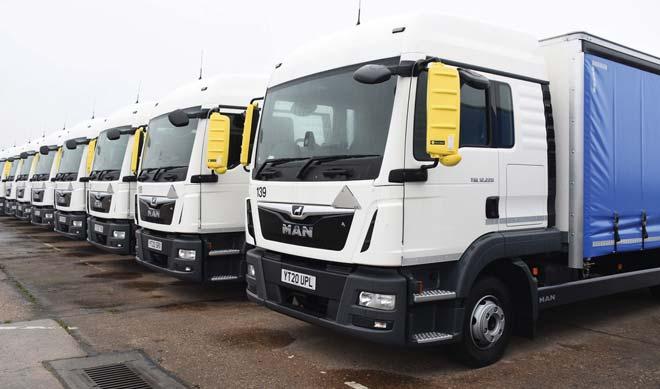
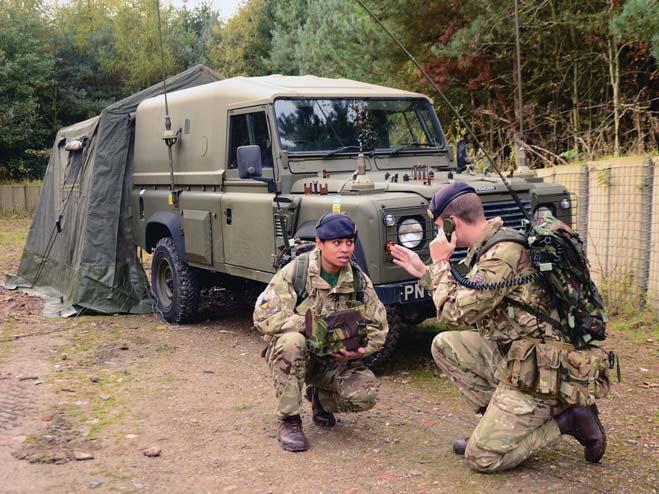
8 The DCS trade aims to re-invigorate long










